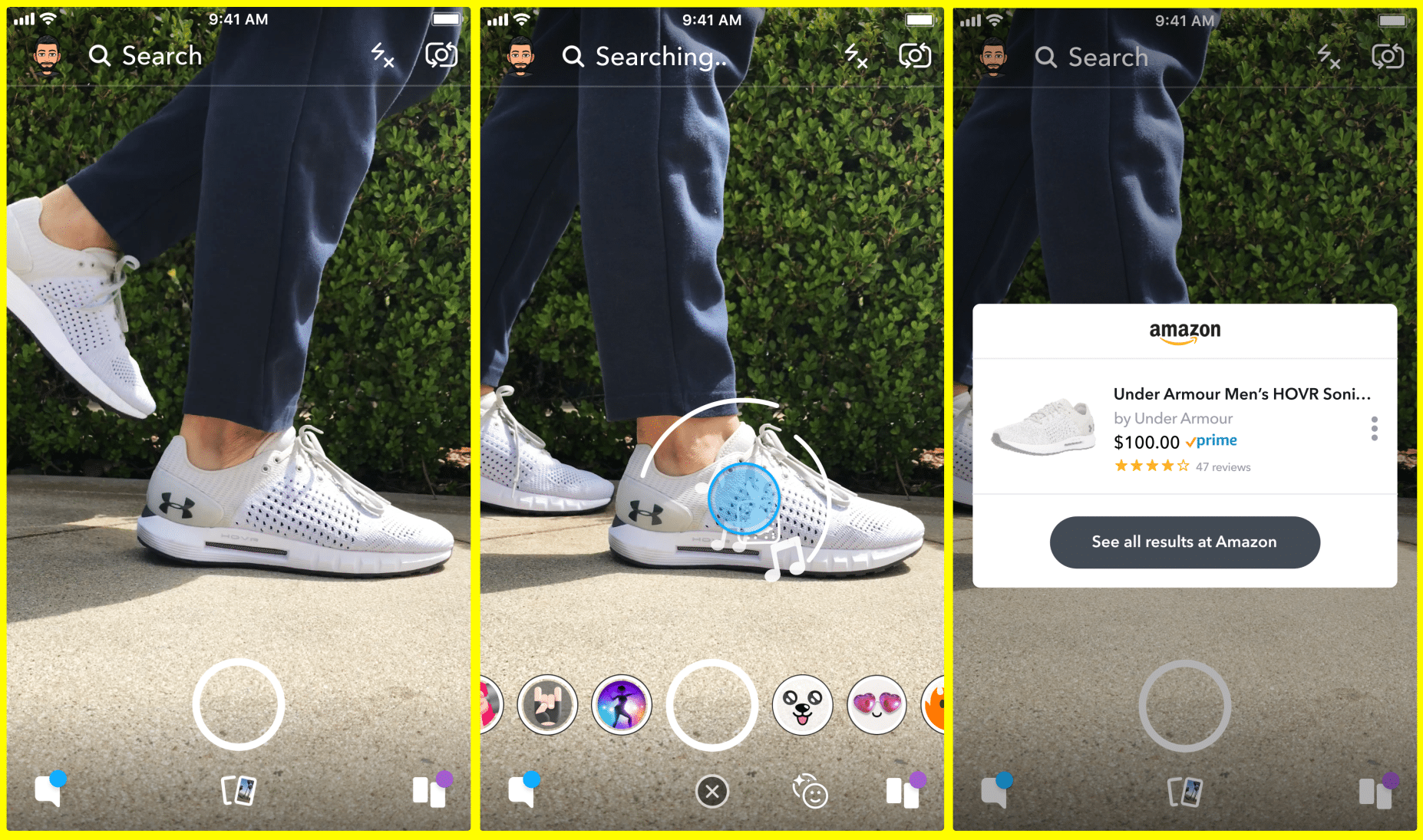
ARtillery Briefs is a video series that outlines the top trends we’re tracking, including takeaways from recent reports and market forecasts. See the most recent episode below, including narrative takeaways and embedded video.
Snap has labeled itself for a while as a camera company. And that’s naturally aligned with the current wave of mobile AR excitement, likewise centered on smartphone cameras. But even as AR slogs through the so-called “trough of disillusionment,” Snap continues to make big AR bets.
As discussed in the latest episode of ARitllery Briefs (video below) this is evident in Snap’s newest batch of AR features. That includes developer-facing features like creator profiles that give them more of a presence on Snapchat to promote their AR lenses and make them discoverable.
Snap has also created new templates for popular lens formats like augmenting hands, bodies and pets. And its “Landmarkers” templates give developers the tools to create customized lenses for popular landmarks like animations on the Eiffel Tower or Flatiron Building and a handful of others.

Flywheel Effect
These moves demonstrate Snap’s realization that in order to grow its platform it needs to attract, and make lens creation easier for, developers. Growing that developer base means more content which attracts more users and in turn attracts more developers… a classic flywheel effect.
Speaking of users, they’re likewise accommodated in the latest batch of AR updates. Most notably, it’s expanding beyond selfie lenses to now utilize the rear-facing camera to augment the world, and thus a greater range of use cases. That includes visual search to identify products.
It also includes the new Scan feature which applies object recognition to detect things like flowers or pets, then serendipitously add context-aware AR animations. Scan also applies computer vision to recognize math problems, and solve them on the fly through animated overlays.
The bottom line is that it’s utilizing more computer vision and machine learning to supplement its signature selfie lenses with more practical use cases. This brings Snap closer to Google Lens, a category we continue to be bullish on because of its utility, frequency and broad appeal.

Business Case
Beyond developers and users, this all leads up to Snap’s third constituent which is advertisers. And that’s the endgame for all of the above. In other words, if developers are creating compelling AR content that attracts users, it can then attract reach-driven brand advertisers.
And that’s already well on its way with 130 million daily AR lens users.* 400 million community lenses were also created in the past year and engaged 15 billion times. This makes Snap the AR engagement leader, even ahead of Pokemon Go’s 65 million active users.
Beyond greater reach, brand dollars will be drawn to a bigger toolbox for product animations. For example, shifting from selfie lenses to the broader mosaic of the physical world seen through the rear-facing camera, it unlocks possibilities for ad creative and advertiser categories.
Back to Pokemon Go, lots of people point to Niantic as the revenue leader in AR, due to the nearly $2.5 billion in in-app purchases it’s brought in to date. But you could argue that not all of that revenue is directly attributable to AR, whereas Snap’s branded lens revenue is.
So that makes Snap the consumer AR revenue leader with about $240 million in branded AR lenses in 2018 according to ARtillery Intelligence. More importantly, it recognizes its AR success and is — as often done with such wins — following the money and doubling down on its AR future.
See the latest episode of AR Briefs below for more.
* Our calculation based on the announced figure of 70 percent of daily active users engaging lenses daily.
For deeper XR data and intelligence, join ARtillery PRO and subscribe to the free AR Insider Weekly newsletter.
Disclosure: AR Insider has no financial stake in the companies mentioned in this post, nor received payment for its production. Disclosure and ethics policy can be seen here.
